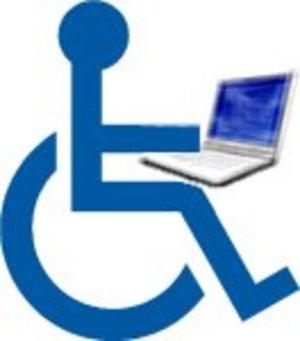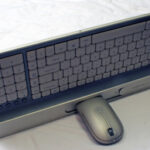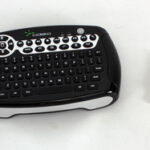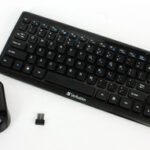I consider myself an expert on this subject because I am disabled and am also a tech geek.
I have Duchene’s Muscular Dystrophy with very limited hand or arm movement. It’s a progressive disability, which gets successively worse. I haven’t been able to type with the computer’s keyboard for the past six years. I’ve been using the computer mouse and voice recognition software to type.
I also use the mouse to control computer games, some of which won’t allow the use of mouse, which I’ll touch on in another article.
For now, I’ll just go into devices & software to type text and navigating & filling forms in. This article is not all-inclusive and mainly for physically disabled people with limited hand movement. If you’re interested in devices for the visually impaired, this isn’t for you. On we go!
NOTE: I use Windows XP and do so for this article. If you use a Mac OS, this article probably will not help you much. If you use another Windows OR, most of these items haven’t changed much since Windows 95. I’ve no idea about VISTA.
On-Screen Keyboards:
This needs explaining. You might think it’s obvious but you’d be surprised by how many people do not understand right away.
An on-Screen keyboard is a keyboard that is on the monitor screen. It’s basically a program that takes up a small portion of the screen space and has mouse-clickable letter, number, and punctuation keys. You just move the cursor over the key you want to type and click it. The output usually goes to another window with the blinking place marker or cursor (Notepad, MS Word, webpage input boxes, etc.).
Most on-Screen keyboards have a customizable interface to change, in which the keys are and the order of keys are displayed.
Some keyboards have more keys and offer more control over the computer’s functions such as CTRL, ESC, ALT, number pad and the F1-F12 keys. Also, some have macro functions that are particularly useful if you use them.
The main problem with using on-Screen keyboards is that they need to be positioned on the workspace so that they can be both in a position to click with the mouse and be out of the way of the program where the input is directed (Notepad, Word, browser, etc.). This isn’t always easy because you don’t want to cover up the area where you’re typing to. I usually place the keyboard at the top and center, over the top of the top most text. If I need to edit the text at the top, I move the keyboard to the bottom. It takes a bit of juggling but it’s not too bad. Sometimes, with a program such as Notepad, I resize it to about a fifth of the screen size, put the keyboard above it, and use the other half of the screen for a video or what have you.
There are several types of on-Screen keyboards but, after trying dozens, I’ve found three that work best.
Microsoft On-Screen Keyboard
This is built in to Windows XP and several Windows Operating Systems before it. For this article, I’ll assume you use XP. I have version 2.0. To access this feature go to Start, Programs, Accessories, Accessibility and it’s listed on the menu as “On-screen Keyboard.”
This keyboard is very good. It has the most computer functions of most keyboards I’ve used. It has all of the alphabet keys, numbers, and punctuation keys like all keyboards. But when set as “Enhanced keyboard,” it also has a number pad, F keys and Tab, Caps Lock, CTRL, Shift, ALT, Windows and Arrows keys. This is setup under the Keyboard menu where you can set it up as Enhanced, Standard (has no number pad, insert, delete and other functions not used much and keys are more compact which is good when you need more workspace). Block versus Regular keyboard just controls the uniformity of key placement on its interface. You can choose 101, 102, or 106 keys, which adds a few extra, less used functions. ““
The Settings menu has the features of “Always on Top” which controls the window hierarchy of the workspace’s windows, “Use Click Sound” for each key, “Type Mode” allows you click keys with the mouse, hover the cursor arrow over them or use a joystick, and “font” allows you to change the font used on the keys.
This keyboard has a lot more strength, in that more programs recognize it’s input such as Java forms. I find the function power when needed but I find it clunky when just typing text. Overall, it’s a great built-in keyboard that should serve most of your needs.
Click-N-Type by Lake Software
This is my usual keyboard of choice when I just need to type text but not so hot when extra functions are needed. It offers the most custom features of the interface setup that I’ve tried. It’s freeware so you just need to download which is available on several sites (but it’s good to save a copy on your hard drive or to disc). The creators’ site is HERE. You can also download language packs for keyboard configurations and the Word prediction list features. This is version 3.01 but 3.02 is out now with a few changes.
File allows you to choose different keyboard interfaces, pre-done or custom-made.
Options include Program Preferences (controls keyboard startup, screen priority, word prediction, etc), Keyboard Preferences (controls the keys, transparency, typing sounds, etc.), Restore Default Size (changes keyboard & key sizes to default if you previously resized it), Keyboard & User-defined Keyboards does what File does, AutoClick allows it to click keys by hovering over them, Scan Mode allows it to scan the keyboard and use a single switch to activate a key when it’s in the cross hairs, and Macros controls the macro & buffer functions.
It installs with a compressed exe file. Good keyboard for custom features and it’s 100% free!
It’s readily available and the creator is still updating new versions.
MH (MacroHard) Keyboard Standard
I used to use this keyboard years ago but don’t use it much now because it’s difficult to place on the screen. It can’t be resized and as a built in text box where the input is typed and needs to be copy with the button or with the mouse and paste it into another program. This can get annoying, like window juggling. It has two spacebar, one at the bottom, one in the middle. There are no extra functions like CTRL or ALT. There’s a drop down menu of common words that opens into the text are. There is a number pad with its own text box and can be shot over into the man text box with the Transfer button.
I’m not sure where to download it now but it’s around if you Google it. It doesn’t have an installer; you just put it in a directory and create shortcuts to it.
A very oddly set up keyboard with its own text area but it has its uses.
I can’t find anywhere to download at the moment, but it might turn up for you on a search engine. It was freeware when I downloaded it last time. I’m guessing that the company stopped updating it and left it die off.
Voice Recognition Software:
It’s basically as it says, voice recognition. These are programs that we use our own speech to dictate to the program through a microphone attached to the computer. The program then transcribes it to text or commands to control the computer. The program can transcribe in real time as we talk or we can record our voice into a recorder and playback for the program to transcribe at a later time.
This is probably the best voice recognition program on the market today that is affordable to the general public.
I’ve used this program since it was in version 3, I believe. It worked really badly then. The good news s that it’s greatly improved with each new version. Once it reached version 6, I really noticed a substantial improvement to the point that I actually found it useful. If you’re going to try this program out, I recommend at least version 7, if not 8. It’s currently up to version 9 now.
Dragon Naturally Speaking comes in several different levels, depending on features, accuracy, use, and price. There are the Personal or Home and Professional levels as follows:
Personal or Home
Standard under $100 basic features but not the best for disabled with mobility problems (mild at best)
Preferred under $200 has enough features for disabled with moderate mobility problems (it has added Bluetooth compatibility)
Professional
Professional (under $900) has enough features to really be useful to the disabled with severe mobility problems
Medical (under $1100) has extra features and a huge medical terminology dictionary, mostly useful for medical transcription
Legal (under $1100) has extra features and a huge legal terminology dictionary, mostly useful for legal transcription
I use Professional 8.0 and it works terrifically. I use it occasionally for typing and even less often for controlling the computer. It still isn’t accurate enough for me to use as my sole program for typing. It should type text most anywhere and control many of the computer’s functions. Nuance boasts a 98-99% accuracy but, what they don’t say too outwardly is that in order to get it that accurate, you need a top of the line microphone, a quiet workplace, the ability to perfectly pronounce every word, and hours to train the program to recognize your voice for thousands of words.
Every version come with a cheap microphone that I don’t recommend using. Each also has a wizard program to setup all of the settings and a set of training tutorials that train it to better recognize your voice by reading long passages of text and word lists. You can also train words as you use it. It will probably take 2-3 weeks of use before you pass 95% accuracy. For me, I’m guessing it’s at 95% now. Don’t expect 100% accuracy with errors from any program, no matter the price.
There are too many versions and features to describe. It’s best that you view the specs at the manufacturer’s site, Nuance.
You can buy their programs on their site but you’ll find better prices at buy.com . Shop around for best prices though.
Form Auto Fillers:
These are programs that will auto-fill form and/or password data into forms both online and offline. The program store the data we enter and it will automatically fill the information into the proper boxes whenever it comes in contact with them. Or it offers one-click capabilities and with one click, it fills the forms in.
RoboForm
Roboform is the top-rated Password Manager and Web Form Filler that completely automates password entering and form filling.
There are free versions with limited features and there are low-priced pay versions. To read more, visit the official site, Roboform. http://www.roboform.com/
E-mail Signatures:
These are pre-typed snippets of text added on the end of email messages with your name, links, quotes, or whatever you choose. Netiquette dictates that you keep it to a minimum, like 3-5 lines tops.
This is an overlooked option for accessibility. Contrary to the limits dictated by netiquette, you can use signatures for purposes other than as “signatures” with whole messages of text. They are a perfect way to offer form responses to repeat questions, inquiries, or statements.
Personally, I sell on eBay a lot and I have email signatures setup for all kinds of inquiries, such as, “have you sent payment yet?”, “have you received the item yet?”, etc. followed by a form response of text, my address, and whatever information is required. When I need one, I just choose the proper signature from a drop-down menu. I use Eudora. Outlook will do it as well.
The possibilities are endless! Best of all, it’s free!
Keyboard Shortcuts:
Every keyboard has built-in commands that are performed with specific key combinations. I will just list a few for Windows XP that I use most for text functions.
CTRL+C: Copy
CTRL+X: Cut
CTRL+V: Paste
CTRL+Z: Undo
CTRL+B: Bold
CTRL+U: Underline
CTRL+I: Italic
TAB: Move to the next control in the dialog box
ENTER: Equivalent to clicking the selected button
To see more Windows shortcuts, go HERE.






